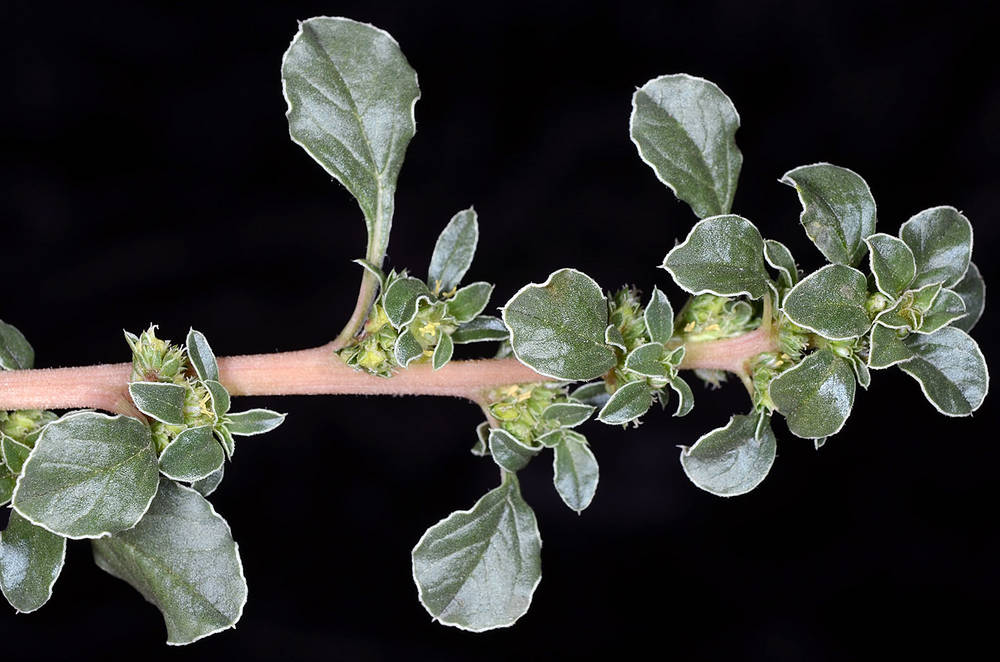Amaranthus palmeri
Amaranthus blitoides
(synonym of Amaranthus graecizans)
prostrate pigweed, tumbleweed amaranth
prostrate to ascending; much branched from bases; mat-forming, 2–6(10) dm.
blades obovate to spatulate, 1–3(4) cm;
margins entire; flat to wavy or crisped, bases wedge-shaped;
midveins extending to a short weak spine;
tips obtuse to rounded;
petioles 7–30 mm; ? ½ as long as blade.
axillary clusters of flowers, green, staminate and pistillate flowers intermixed;
bracts leaf-like; narrow and thin, 1–3(4) mm.
few;
perianth segments 3(4), 1.5–2.5 mm, scarious;
stamens 3.
perianth segments (3)4–5, unequal, 1–3 mm;
styles 3, becoming reflexed.
ovoid to elliptic, 1.7–2.5 mm, bases smooth, rugose at tips; dehiscence circumscissile.
lenticular, elliptic; plump, 1.1–1.7 mm, dark brown to black; shiny to somewhat dull.
=32.
Amaranthus palmeri
Amaranthus blitoides
Disturbed areas, riverbanks, dunes, fields. Flowering Jun–Sep. 50–1700 m. BR, BW, Col, ECas, Lava, Owy, Sisk. CA, ID, NV, WA; nearly worldwide. Native?
See also A. albus.
Bridget Chipman



